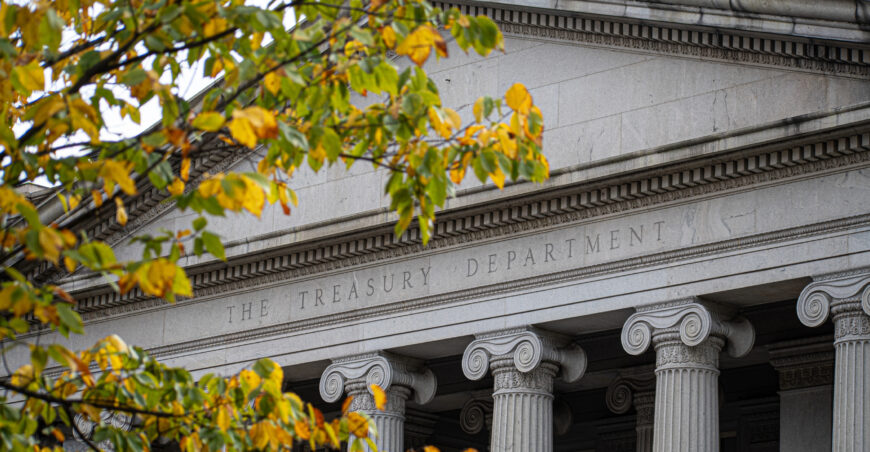The U.S. 10 year Treasury yield is a cornerstone of financial markets, impacting everything from mortgage rates to commercial lending conditions. Serving as a benchmark for long-term interest rates, its fluctuations reflect broader economic conditions, inflation expectations, and investor sentiment. In a commercial lending context, the yield’s movements directly affect borrowing costs, property valuations, and even lending standards. Understanding how this key financial metric interacts with economic trends, particularly during an election year, is essential for anyone in commercial real estate.
The 10 Year Treasury Yield as a Benchmark for Interest Rates
In the world of commercial real estate, many long-term loans tie their interest rates to the 10 year Treasury yield. When the yield rises, lending rates often follow, increasing debt-service costs and impacting the affordability of loans. The yield acts as a barometer for inflation and economic health, making it one of the most closely watched indicators in finance. A sharp rise in the 10 year Treasury yield can signal a tightening of monetary policy, leading lenders to increase rates. Conversely, when yields fall, financing becomes more accessible, spurring investment and acquisition activity.
Commercial real estate investors, particularly those with highly leveraged portfolios, closely monitor these yield movements. Rising yields mean higher borrowing costs, which can strain cash flow, reduce property income, and affect overall return on investment (ROI). Lower yields, on the other hand, create favorable borrowing conditions that can lead to increased acquisition activity and boost property demand.
Loan Affordability and Cash Flow Impact
Higher yields translate into higher borrowing costs, which can directly impact the affordability of loans. In commercial real estate, debt service is often a significant part of property ownership costs. An increase in the 10 year Treasury yield can lead lenders to adjust rates upwards, resulting in larger monthly payments for borrowers. This change is particularly burdensome for owners of highly leveraged properties, as it can erode profitability. Rising financing costs ultimately reduce cash flow, influencing decisions around refinancing, property improvements, and new acquisitions.
Additionally, the strain on cash flow impacts landlords’ flexibility in tenant negotiations. Higher costs may force owners to pass on expenses to tenants, raising rents and potentially leading to higher vacancy rates if tenants seek more affordable options. In a high-yield environment, strategic management of financing terms becomes critical for property owners, especially in competitive urban markets.
How Yield Movements Affect Property Valuations and Cap Rates
Property valuations are intimately tied to financing costs. The 10 year Treasury yield influences cap rates, which represent the ratio of a property’s net operating income to its purchase price. Higher financing costs, driven by rising Treasury yields, prompt investors to demand higher cap rates to balance their risk, which can place downward pressure on property values. For instance, in a high-yield environment, a 6% cap rate may increase to 7% or higher as investors adjust their expectations, affecting both buying and selling decisions in the market.
In a low-yield setting, cap rates often compress, signaling higher property values. This phenomenon has been particularly pronounced in recent years, with record-low interest rates pushing property values to unprecedented levels. As yields normalize or rise, we may see a shift in cap rate expectations, particularly in high-growth markets. For commercial property owners, understanding these trends is key to anticipating how yield changes could impact portfolio valuations and potential return on investment.
Investor and Lender Confidence in Changing Economic Landscapes
Movements in the 10 year Treasury yield serve as a reflection of broader economic sentiment. When yields rise, it can indicate optimism about economic growth, though it often comes with inflation concerns. On the other hand, falling yields may signal economic uncertainty, leading investors to seek the safety of Treasury bonds. This affects not only lending rates but also the terms lenders are willing to offer.
In high-yield periods, lenders may tighten loan terms to mitigate risk, limiting loan-to-value ratios and increasing covenant requirements. During economic slowdowns or when the Treasury yield dips, lenders might adopt more flexible standards, benefiting borrowers. These lending adjustments, triggered by yield movements, shape financing structures in commercial real estate, impacting everything from amortization schedules to prepayment options.
How Presidential Elections and GDP Growth Impact Interest Rates & the 10 Year Treasury Yield
In a presidential election year, economic and political factors combine to influence interest rates and the 10 year Treasury yield. This interaction is driven by market uncertainty, potential policy changes, and inflation expectations, which all impact investor sentiment and financial markets. Let’s explore how these factors shape the economic landscape.
1. Market Uncertainty and Volatility
Election-Year Market Behavior: Presidential election years often bring a sense of uncertainty to financial markets, as investors hold back on major decisions until the political outlook clarifies. This waiting period can create volatility in Treasury yields, with investors often moving into safer assets like Treasury bonds, pushing yields down temporarily as bond prices rise. However, as election results approach, yields can adjust as investors recalibrate for the incoming administration’s potential policy direction.
GDP Growth Signals: GDP growth is a core indicator of economic health. Strong GDP numbers suggest a robust economy, which may prompt the Federal Reserve to tighten monetary policy to prevent inflation. Conversely, weak GDP growth can signal a potential slowdown, leading the Fed to adopt looser policies. This dynamic is crucial for both Treasury yields and broader interest rates, as GDP trends shape investor expectations about future economic conditions.
2. Inflation Expectations and Federal Reserve Policy
Election and Policy Shifts: Presidential elections often bring potential policy changes that affect inflation expectations. For instance, a new administration might propose spending on infrastructure or social programs, which can increase demand and drive inflation. In response, the 10 year Treasury yield often rises, as investors seek returns that offset expected inflationary impacts.
GDP’s Role: When GDP growth is strong, it can reinforce inflationary pressure, especially if the economy is already close to full capacity. This may prompt the Fed to raise rates, increasing the 10 year Treasury yield as investors adjust for future rate hikes. Conversely, weaker GDP data can signal limited inflation risk, leading the Fed to maintain or even lower rates, which keeps Treasury yields low.
3. Investor Sentiment and Demand for Safe-Haven Assets
Safe-Haven Demand During Elections: Election cycles tend to increase demand for safe-haven assets like U.S. Treasuries, particularly when political uncertainties loom. This shift can drive yields down as investors move capital to safer bonds. Once election outcomes are certain and confidence stabilizes, demand for Treasuries may wane, potentially pushing yields back up.
Impact of GDP on Risk Appetite: GDP data also influences investor sentiment. Strong economic indicators, like high GDP growth, often encourage investors to favor riskier assets over bonds, leading to decreased demand for Treasuries and higher yields. However, if GDP data falls below expectations, it can drive investors toward safer assets, lowering Treasury yields as they seek stability amid signs of a slowing economy.
4. Fiscal Policy Expectations and Long-Term Debt Costs
Election-Year Fiscal Policy and Borrowing: The election outcome heavily impacts fiscal policy expectations. A winning candidate who proposes significant spending or tax reforms may increase federal borrowing, which impacts the bond market. When the government issues more bonds to finance initiatives, bond yields can rise to absorb the increased supply, especially if inflationary expectations are attached to the new policies.
GDP’s Influence on Fiscal Policy: High GDP growth provides some flexibility for fiscal policy changes, as a strong economy can better absorb government spending initiatives without driving up inflation. Anticipated government borrowing can push yields higher as investors price in the costs of increased debt. In contrast, slow GDP growth may prompt fiscal restraint, leading to lower Treasury yields as inflationary pressures remain subdued.
5. Federal Reserve’s Election-Year Policy Stance
Fed Neutrality in Election Years: The Federal Reserve traditionally aims for a neutral stance in the lead-up to elections to avoid perceptions of political bias. This can create short-term stability in rates. However, if GDP growth or other economic data signals strong activity, the Fed may be compelled to act even in an election year, adjusting rates in response to evolving economic conditions.
Influence on 10 Year Treasury Yield: The Fed’s neutral stance can stabilize Treasury yields temporarily, but unexpected GDP shifts can prompt preemptive rate adjustments. For example, if GDP growth is stronger than expected, the Fed may feel pressured to tighten, pushing the 10 year Treasury yield higher. Conversely, weak growth might encourage a more accommodative policy, keeping yields lower.
Key Takeaways
Election-Year Caution and Treasury Demand: During election years, uncertainty can drive investors toward Treasury bonds, lowering yields. However, strong GDP growth may counterbalance this trend by raising inflationary concerns, which can push yields higher.
Inflation and Rate Expectations: Robust GDP growth during an election year often reinforces inflation expectations, leading the Fed to consider rate hikes post-election and driving the 10 year Treasury yield up.
Fiscal Policy and Debt Costs: Fiscal policy shifts anticipated in election outcomes can influence Treasury yields, particularly if increased borrowing or spending drives inflation expectations higher.
In a presidential election year, GDP growth data plays a critical role in shaping the 10 year Treasury yield. High GDP growth combined with election uncertainty often leads to fluctuating Treasury demand, with higher yields likely if inflation expectations rise. Conversely, weak GDP growth and election caution may keep yields suppressed as investors seek stability. By understanding these dynamics, investors can make more informed decisions amid the unique political and economic conditions of an election year.
If you’re looking to make informed lending and investment decisions in today’s shifting interest rate landscape, the ICRE Investment Team is ready to support you. With the 10 year Treasury yield influencing financing costs, property values, and investment dynamics, our expertise can help you navigate these complexities. From tailored insights on lending standards to strategic guidance on optimizing your portfolio, we’re here to strengthen your commercial real estate strategy. Connect with us today to explore solutions that align with your goals.
















